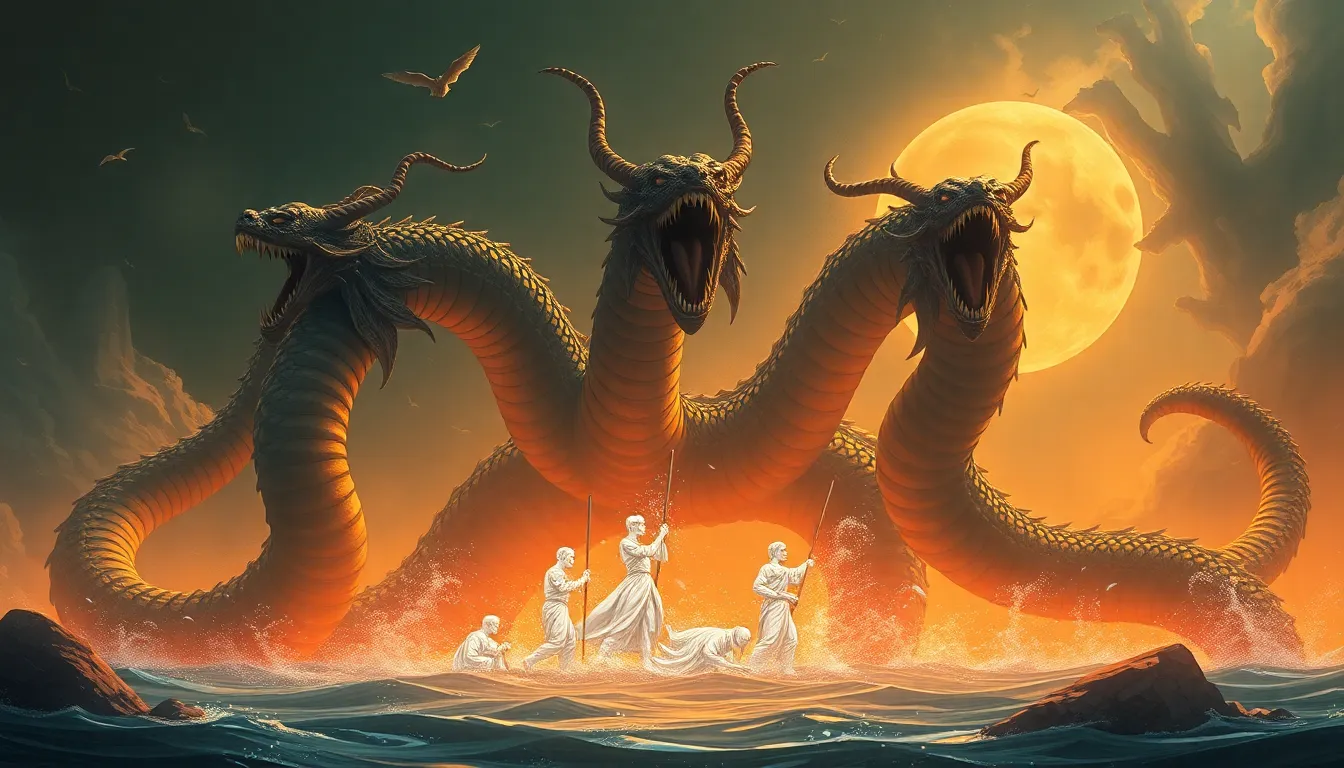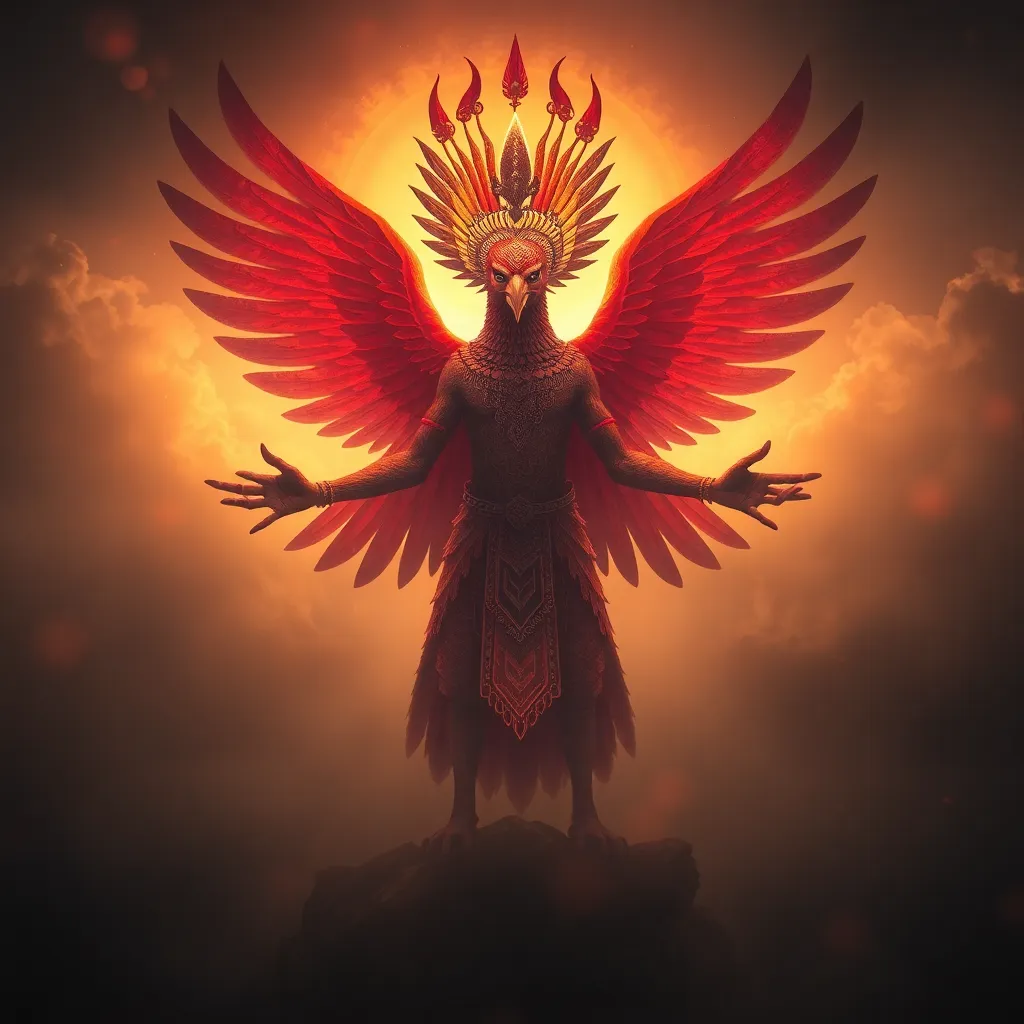The Tale of the Hydra: Slaying the Multi-Headed Monster
Introduction to the Hydra: Myth and Symbolism
The Hydra, a fearsome creature from Greek mythology, is often depicted as a multi-headed serpent that has become a symbol of insurmountable challenges. According to ancient tales, each time one of its heads was severed, two would grow back in its place, making it a formidable opponent. This regenerative ability serves as a powerful metaphor for the obstacles we face in life; challenges that seem to multiply the more we attempt to overcome them.
In many ways, the Hydra represents the complexities of human struggles. Just as Heracles faced the daunting task of defeating this beast, individuals today encounter their own hydras—issues that require resilience, ingenuity, and sometimes, the help of others to conquer.
The Origins of the Hydra: A Mythological Background
The Hydra was said to be the offspring of Typhon and Echidna, two of the most fearsome monsters in Greek mythology. This creature resided in the Lernaean Marsh, a swampy area in the Argolid region of Greece, known for its treacherous terrain and murky waters. The Hydra was described as having a massive body with multiple heads, often depicted as having anywhere from seven to a hundred heads, depending on the version of the myth.
In the context of Greek mythology, the Hydra plays a significant role in the tales of Heracles (Hercules), one of mythology’s greatest heroes. The Lernaean Marsh is not only a geographic landmark but also a cultural symbol of the challenges and dangers that heroes must confront. The story of the Hydra serves as a reminder of the perils that lurk in shadowy places, waiting for a brave soul to confront them.
The Twelve Labors of Heracles: The Hydra’s Role
Heracles, renowned for his strength and courage, was tasked with completing Twelve Labors as a form of penance. The second of these labors was to slay the Hydra, an undertaking that would test not only his physical prowess but also his strategic thinking. Approaching the Hydra’s lair, Heracles was met with the horrifying sight of the beast, its heads hissing and snapping, each one ready to strike.
The challenges faced by Heracles during the battle were significant. As he swung his sword to sever the heads, he quickly realized that for each head he cut off, two more would grow back. This relentless regeneration posed a severe threat, making it clear that brute strength alone would not suffice. Heracles soon recognized the importance of teamwork when he enlisted the help of his cousin, Iolaus, who played a crucial role in the battle.
The Hydra’s Regenerative Powers: A Deadly Challenge
The most terrifying aspect of the Hydra was its ability to regrow heads. This regeneration process symbolized the complexity of challenges: the more we attempt to tackle them, the more they can multiply. In mythology, this regenerative power is often interpreted as a reflection of human struggles where solutions may lead to new problems. The Hydra’s ability to regenerate serves as a reminder that some challenges are not easily vanquished and require careful planning and strategy.
This regeneration can be viewed metaphorically. Life often presents us with seemingly insurmountable problems that, when confronted, seem to multiply or transform into even larger issues. The myth encourages individuals to seek solutions that are not just temporary fixes, but rather sustainable strategies to deal with recurring challenges.
Strategies for Defeating the Hydra: Lessons from the Myth
Heracles’ battle with the Hydra provides valuable insights into problem-solving. To counter the beast’s regenerative power, Heracles and Iolaus devised a clever strategy. After severing a head, Iolaus would cauterize the stump with a flaming brand, preventing the growth of new heads. This tactic highlights several important lessons:
- Adaptation: Adjusting strategies based on the challenges faced is crucial.
- Collaboration: Working with others can lead to more effective solutions.
- Persistence: Overcoming obstacles often requires continuous effort and determination.
These symbolic lessons encourage individuals to face their own ‘hydras’ with creativity, support, and unwavering resolve.
Cultural Impact of the Hydra: From Ancient Times to Modern Media
The Hydra’s legacy extends far beyond ancient Greece, permeating literature, art, and popular culture. This creature has inspired countless adaptations and interpretations throughout history. In literature, the Hydra appears in works ranging from classical texts to modern novels, often symbolizing overwhelming obstacles.
In contemporary media, the Hydra is represented in various forms:
- Films: Movies such as Clash of the Titans and animated adaptations of Greek myths feature the Hydra as a formidable foe.
- Video Games: The Hydra frequently appears as a boss character in many fantasy role-playing games, showcasing its legendary status.
- Artwork: Artists have depicted the Hydra in numerous forms, highlighting its fearsome beauty and symbolic depth.
This enduring legacy demonstrates the Hydra’s ability to resonate with audiences across generations, embodying themes of struggle, resilience, and heroism.
The Hydra as a Metaphor for Modern Challenges
In today’s world, the Hydra serves as a powerful metaphor for the multi-faceted challenges individuals face. Issues such as mental health, societal inequalities, and environmental crises can be likened to the many heads of the Hydra—each representing a different aspect of a larger problem. Just as Heracles confronted the Hydra, we too must face our modern-day issues with courage and determination.
Common multi-headed problems in contemporary society include:
- Poverty and economic disparity
- Mental health struggles
- Climate change and environmental degradation
To effectively tackle these challenges, individuals can draw inspiration from the mythological narrative by employing strategies such as:
- Collaborating with others to create collective solutions.
- Adopting a long-term perspective on problem-solving.
- Utilizing creative thinking to address complex issues.
Comparative Mythology: Hydra and Other Multi-Headed Beasts
Throughout various cultures, the concept of multi-headed monsters appears repeatedly. Similar creatures include:
- Yam: A sea monster from Canaanite mythology often depicted with multiple heads.
- Cerberus: The three-headed dog guarding the Underworld in Greek myth.
These creatures share common themes that reflect humanity’s fears and challenges, symbolizing the struggles we face in our lives. They remind us of the complexities of confronting our personal ‘monsters’ and the bravery required to overcome them.
Conclusion: The Hero’s Journey and the Slaying of the Hydra
The tale of the Hydra embodies the hero’s journey, illustrating the trials and tribulations that shape a hero’s character. Heracles’ battle against the Hydra is not merely a story of triumph over evil, but a profound allegory for the challenges we encounter in life. It teaches us that obstacles can be daunting, but with perseverance, creativity, and collaboration, we can find ways to overcome even the most formidable of foes.
As we navigate our own paths, may we remember the lessons learned from the Hydra—embracing our challenges, seeking support, and emerging victorious in our quests.




